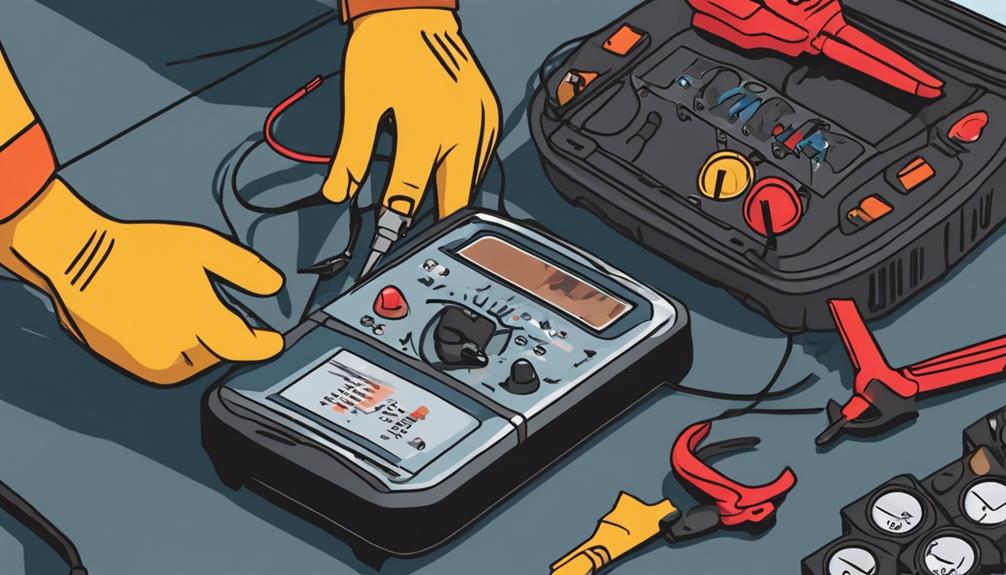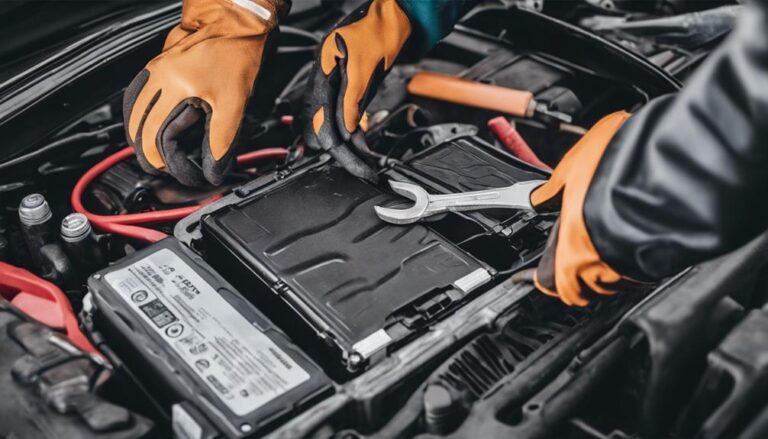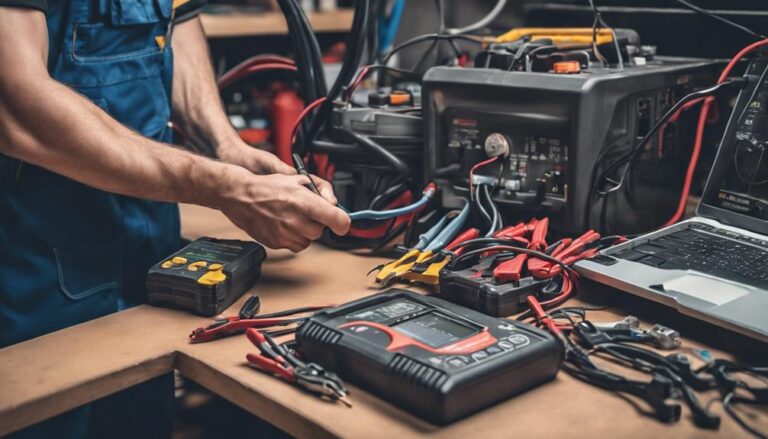5 Essential Tips for Battery Maintenance and Replacement
Imagine your car's battery as the heart of your vehicle, providing the essential power needed to keep everything running smoothly. But what happens when this vital component starts to falter?
In this discussion, you will uncover five crucial tips that can help you maintain and replace your battery effectively, ensuring your car stays reliable and ready to hit the road.
Key Takeaways
- Regularly test electrolyte levels and maintain proper hydration to prolong battery life.
- Clean battery terminals to ensure optimal electrical conductivity and prevent corrosion.
- Watch for signs of battery degradation like diminished power or swelling for timely replacement.
- Utilize battery maintainers to prevent overcharging and maintain correct voltage levels during inactivity.
Signs of Battery Degradation
When assessing signs of battery degradation, pay close attention to diminished cranking power as it's a common indicator of potential issues. This decrease in cranking power can be a clear sign that your battery is no longer operating at its optimal level.
To further diagnose the state of your battery, consider utilizing battery testing methods such as load testing or specific gravity testing. These methods can provide you with precise insights into the health of your battery and help determine if it's approaching the end of its lifespan.
Additionally, keep an eye out for other battery warning signs like swollen or corroded battery cases, frequent jump-starts, dimming headlights, interior lights, or electrical component malfunctions. These indicators often point towards battery deterioration and the imminent need for replacement.
Cleaning Battery Terminals
To ensure optimal electrical conductivity and prevent starting issues, it's essential to regularly clean the battery terminals, especially when signs of degradation are observed. Preventing corrosion is key to maintaining a reliable electrical connection.
Here are some steps to effectively clean your battery terminals:
- Mix a solution of baking soda and water to create a cleaning paste.
- Disconnect the battery cables before cleaning to ensure safety and prevent electrical shock.
- Use a wire brush or terminal cleaning tool to scrub away corrosion gently.
- Inspect the battery terminals for tightness after cleaning to maintain a secure connection.
Checking Electrolyte Levels
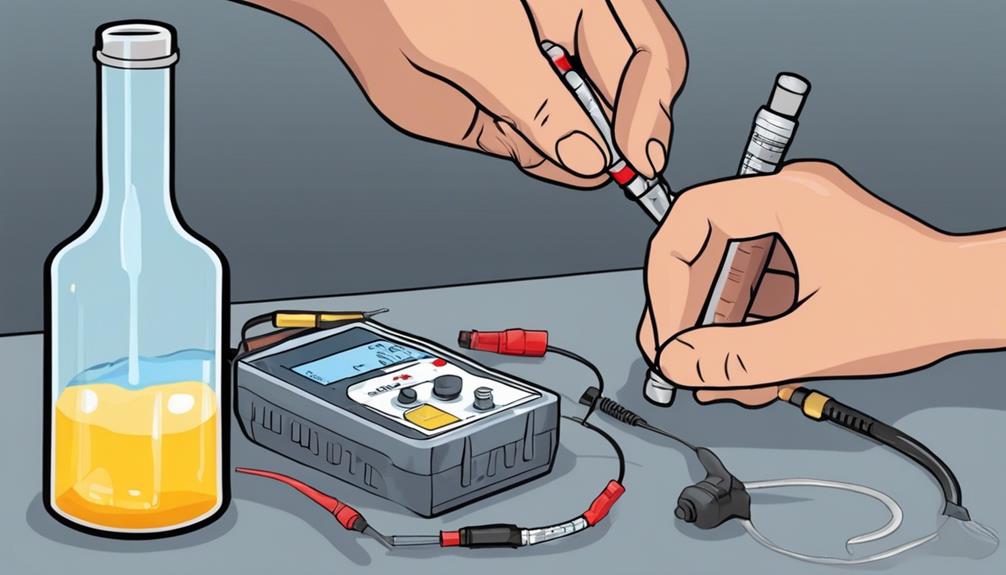
Inspect the battery cell covers to check the electrolyte levels, a critical maintenance task for ensuring optimal battery performance. To assess the electrolyte levels, you need to pry off the battery cell covers carefully to access the fill holes. Proper hydration is crucial for the battery's health. If the electrolyte level is low, adding distilled water can help maintain optimal performance.
Monitoring and maintaining proper electrolyte levels are essential for extending the battery's lifespan and ensuring efficient function. Regularly testing the electrolyte levels can prevent damage and alert you to any issues that may arise.
During this process, it's also important to inspect the battery case for cracks and leaks, as these could affect the electrolyte levels and overall battery performance. By following these electrolyte testing methods and emphasizing the importance of proper hydration, you can keep your battery in top condition and maximize its longevity.
Inspecting Battery Condition
Before proceeding with the inspection of the battery condition, it's crucial to ensure that the electrolyte levels have been checked and adjusted if necessary.
When checking the battery condition, look out for physical damage such as cracks or leaks, ensure terminals are free from corrosion, and regularly clean them. Additionally, monitoring the battery age is essential as older batteries may not hold a charge as well.
Preventing overcharging is crucial to prolong the battery's life. To inspect the battery thoroughly, watch for any bulging or swelling in the battery case, as this can indicate internal issues.
Using Battery Maintainers
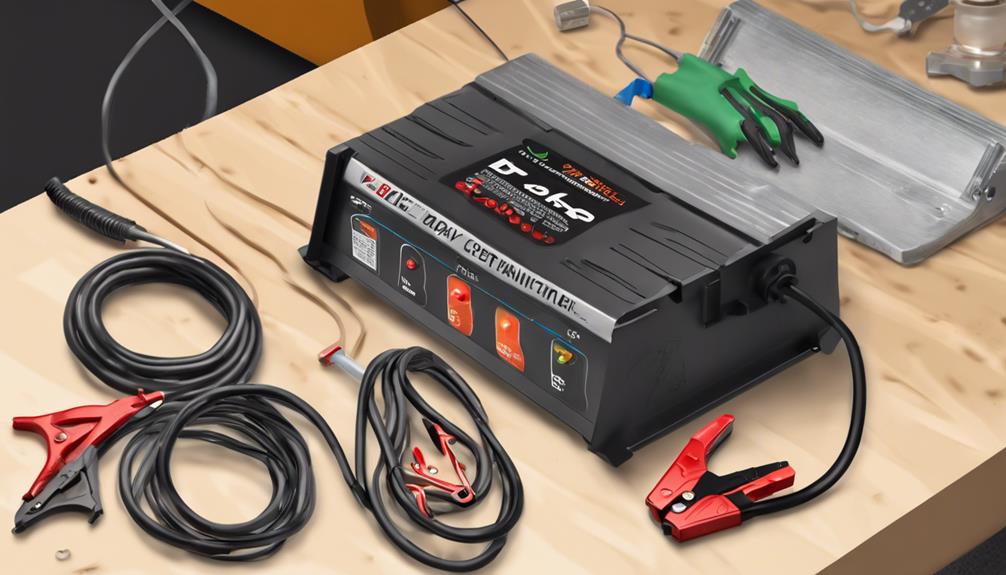
When maintaining your vehicle's battery, utilizing battery maintainers can effectively prevent battery drain during extended periods of inactivity.
Battery maintainers offer several benefits for keeping your battery in optimal condition. They automatically adjust charging levels to prevent overcharging, which can lead to battery damage. By monitoring and maintaining the right voltage levels, these devices help extend the life of your battery. This is especially useful for seasonal vehicles or those with limited use, ensuring your battery is always ready for action.
To make the most of your battery maintainer, it's essential to follow best practices. Connect the maintainer following the manufacturer's instructions, and regularly check the connections for any signs of wear or corrosion.
Using a battery maintainer is a cost-effective way to protect your battery investment and avoid unexpected issues when you're ready to hit the road.
Frequently Asked Questions
What Are Best Practice for Battery Maintenance?
To maintain your battery effectively, focus on charging cycles and corrosion prevention. Monitor how often you charge it and keep terminals clean to prevent damage. Following these practices will help optimize battery performance and longevity.
What Five Steps Are Done During Battery Maintenance?
When maintaining batteries, you should clean terminals, check electrolyte levels, inspect for damage, test the charge, and secure it properly. Common problems include corrosion and low electrolyte levels. Proper handling ensures longevity and safety.
What Is the Best Way to Maintain a Battery?
To maintain a battery for longevity, prioritize proper charging habits. Prevent corrosion by regularly cleaning terminals. Secure the battery to minimize vibration damage. Monitor electrolyte levels and top up with distilled water. Test charge periodically for optimal performance.
What Safety Precautions Should Be Taken While Changing the Battery?
When changing a battery, remember safety measures are crucial. Always wear protective gear, disconnect the negative terminal first, and handle the battery with care. Using insulated tools and proper disposal methods ensures a smooth process.
Conclusion
In conclusion, just like how a well-maintained battery powers a vehicle smoothly, taking care of your car's battery ensures a reliable and efficient driving experience.
By following these essential tips, you can symbolically keep your vehicle running like a well-oiled machine, ready to take on the road ahead with confidence.
Remember, a little maintenance goes a long way in keeping your battery and your vehicle in top condition.

